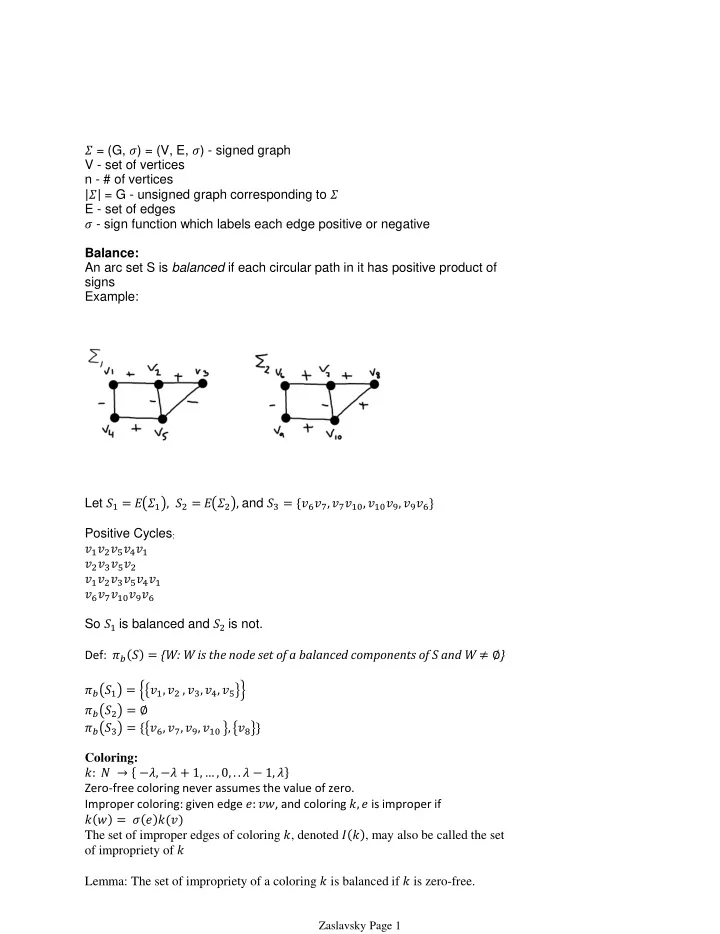

= (G, ) = (V, E, ) - signed graph V - set of vertices n - # of vertices = G - unsigned graph corresponding to E - set of edges - sign function which labels each edge positive or negative Balance: An arc set S is balanced if each circular path in it has positive product of signs Example: Let E E and Positive Cycles : So is balanced and is not. Def: {W: W is the node set of a balanced components of S and W } Coloring: Zero-free coloring never assumes the value of zero. Improper coloring: given edge , and coloring is improper if The set of improper edges of coloring , denoted , may also be called the set of impropriety of Lemma: The set of impropriety of a coloring is balanced if is zero-free. Zaslavsky Page 1
: Signed Covering Graph = with sign is covered by two arcs: and Covering projection: , where and Covering orientation: Notes: is acyclis iff is is an unsigned graph Switching: υ : V Switching by υ means reversing the sign of any edge whose endpoints have opposite υ value. Switching a vertex switches its color to the opposite. υ( ) = +1 υ( ) = υ( ) = υ( ) = -1 Zaslavsky Page 2
Exercise: show that switching does not alter balance and preserves sets of impropriety. Deletion and Contraction: Deletion works the same as with unsigned graph. To contract an edge : If is a positive edge, same process as with unsigned graph. If is a negative edge, switch such that becomes a positive edge. Then contract as a positive edge. To contract an edge set : Switch so every balanced component of is all positive, coalescing all the nodes of each balanced component, and discarding the remaining nodes and all the edges in . Zaslavsky Page 3
The importance of contraction come when we contract the graph on its set of improprieties of a coloring. Zaslavsky Page 4
Zaslavsky Page 5
Zaslavsky Page 6
Recommend
More recommend